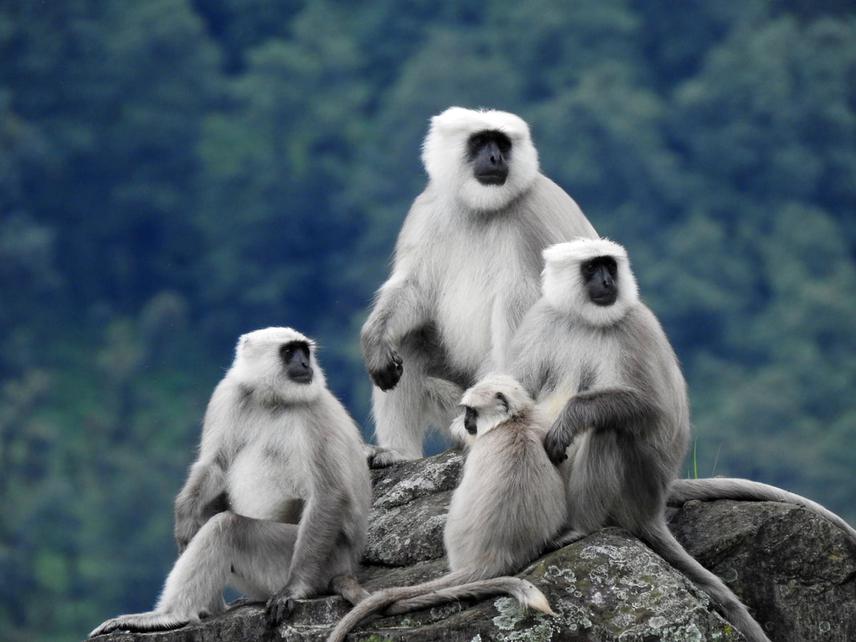Article featuring the project.
Nature in Focus How does the behaviour of langur troops change with altitude and climate? A primatologist shares her experience from the Himalayas
30 Jun 2016 Garhwal Himalayas, India, Indian Sub-continent Conflict | Primates | Mammals
Ecology and Conservation Status of the Virtually Unknown Central Himalayan Langur in the Kedarnath Wildlife Sanctuary, Northern India
Assessment of a Multidisciplinary Framework for Human–Wildlife Coexistence in the Indian Western Himalaya
In continuation of my previous study of the Himalayan langur-human interface, this project will focus on the behavioural ecology of the unstudied higher-altitude meadow langurs and their interactions with seasonally grazing goats and sheep. This study will investigate the interaction between langur diet (including medicinal plants), zoonotic disease transmission between livestock and langurs, and survey local knowledge of medicinal plants.

The Garhwal Himalaya alpine meadows are rapidly degrading due to over-grazing by livestock. This is an imminent threat to their biodiversity and also of concern for how the loss of their flora may impact dependent species like the yet-unknown Himalayan langurs and their own potential medicinal value. With increasing resource competition between livestock and langurs, additionally, there are heightened risks of zoonotic parasite transmission. Documentation of the overlap between langur diet, medicinal plant ingestion and disease transmission offer the opportunity to measure and monitor the health and develop better conservation measures for this fragile alpine ecosystem and its langurs.
It is crucial to engage with the local communities, who share their home with this primate and other wildlife, in order to educate them about their natural resources so that they can utilise them in a more sustainable manner. Having spent one year at this site already, I am now aware of the problems faced by the local people and the wildlife species, especially in terms of human-wildlife conflict. I am very keen to explore ways to deal with these problems, and this clearly requires more detailed studies and, most importantly, a rather long-term commitment to the area, its wildlife and its people.
This project would provide new information on the dietary strategies of the virtually unknown central Himalayan langur, particularly in response to extreme climatic conditions and their impact on livestock-primate parasite transmission patterns. This knowledge would be useful to model future effects of climate change on primate behaviour and health, and provide rational directions for future conservation efforts of this rare primate and livestock management practice in its alpine habitat.
Documentation of the traditional knowledge of herbal medicine from the remote high-altitude villages of Uttarakhand state is also of great importance to identify plants important for the local communities and possibly for wildlife too, particularly as the alpine meadows are slowly, but steadily, degrading. Although there has been some laboratory studies in recent years to examine the pharmacological value of Himalayan medicinal plants traditionally sought after in Ayurvedic medicine, such information has rarely been directed back to the local communities, who continue to depend on the local flora for most of their medicinal needs.
Article featuring the project.
Nature in Focus How does the behaviour of langur troops change with altitude and climate? A primatologist shares her experience from the Himalayas